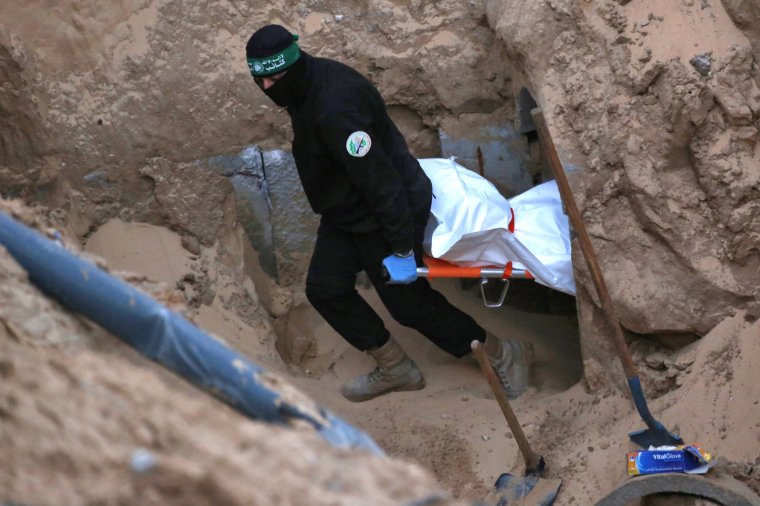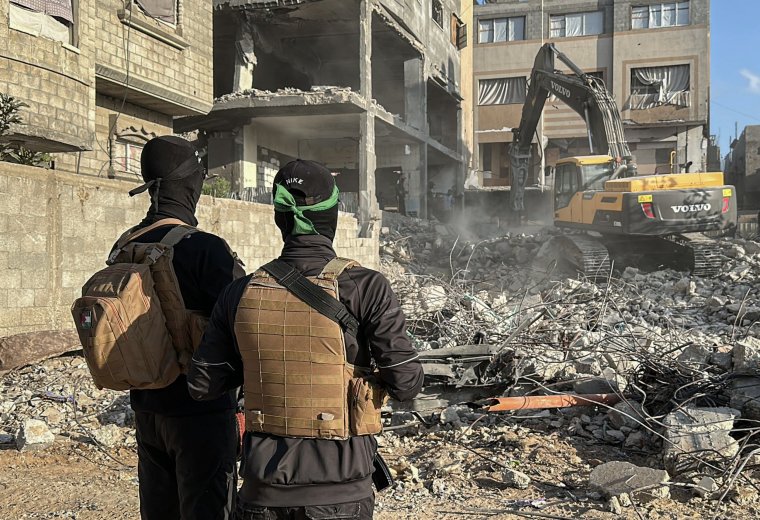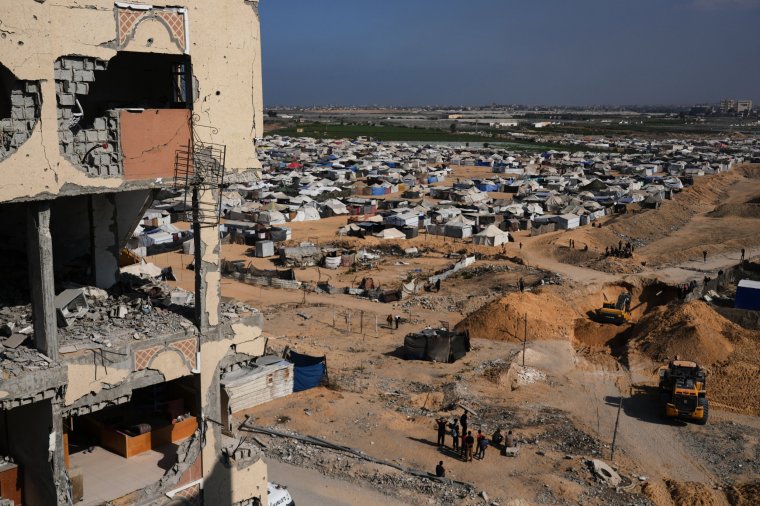Hamas says it is struggling to locate hostages’ bodies amid the destruction in Gaza, while Israel accuses the militant group of delaying their return
Israeli prime minister Benjamin Netanyahu has ordered Israel’s armed forces to immediately carry out “powerful strikes” in Gaza, sparking Hamas to warn it would delay the return of a hostage’s body.
The developments piled new pressure on the tenuous ceasefire in the Middle East. Israel had reported Hamas firing on its forces in southern Gaza.
It also said Hamas had returned a set of remains that belonged to a hostage the rest of whose body had been recovered earlier in the war.
Netanyahu called the return a “clear violation” of the ceasefire agreement, which requires Hamas to return all Israeli hostage remains as soon as possible.
An Israeli military official said troops were shot at in the southern city of Rafah on Tuesday and returned fire.
The ceasefire, that began on 10 October, has largely held despite at least two previous flare-ups in violence.
On 19 October, Israel said two of their soldiers were killed by Hamas fire. Israel responded with a series of strikes that killed over 40 Palestinians, according to local health officials.
Over the weekend, Israel carried out an air strike, wounding several people, against what it said were Islamic Jihad militants planning an attack.
Thirteen bodies of hostages still remain in Gaza. On Tuesday, Hamas said it had recovered the body of a hostage, but after Israel announced the plans to strike Gaza, the Palestinian group said it would delay the handover.

An Associated Press videographer in Khan Yunis witnessed what appeared to be a white bodybag being carried out from a tunnel by several men, including some masked militants, and then transported into an ambulance. It was not immediately clear what was in the bag.
The slow return of hostages’ bodies is posing a challenge to implementing the next stages of the ceasefire, which will address issues such as the disarmament of Hamas, the deployment of an international security force in Gaza and deciding who will govern the territory.
Hamas has said it is struggling to locate the bodies amid the vast destruction in Gaza, while Israel has accused the militant group of purposely delaying their return.
Over the weekend, Egypt deployed a team of experts and heavy equipment to help search for the remains of the remaining hostages. That work continued on Tuesday in Khan Yunis and Nuseirat.


More than 68,500 Palestinians have died in the two-year war in Gaza, according to the health ministry in Gaza, which does not distinguish between civilians and combatants in its count. The ministry maintains detailed casualty records that are seen as generally reliable by UN agencies and independent experts. Israel has disputed them without providing its own toll.
This is the second time since the ceasefire began that the remains turned over by Hamas have been problematic. Israel said one of the bodies Hamas released in the first week of the ceasefire belonged to an unidentified Palestinian.
During a previous ceasefire in February 2025, Hamas said it handed over the bodies of three hostages, Shiri Bibas and her two sons, but testing showed that one of the bodies returned was identified as a Palestinian woman. Shiri Bibas’s body was returned a day later.
The remains returned overnight have been identified as belonging to Ofir Tzarfati, Netanyahu’s office said.
Tzarfati was kidnapped from the Nova music festival in the October 7 attack by Hamas on Israel in 2003. Militants killed about 1,200 people that day, mostly civilians, and took 251 hostages.
Tzarfati was killed in captivity and his body was retrieved by Israeli troops in November 2023. In March 2024, his family received additional remains for burial.
Tzarfati’s family said in a statement that this is the third time “we have been forced to open Ofir’s grave and rebury our son”.
In exchange for 15 dead hostages returned from Gaza since the ceasefire began, Israel has handed back 195 Palestinian bodies. The last 20 living hostages were returned to Israel at the start of the ceasefire, and in exchange, Israel freed roughly 2,000 Palestinian prisoners.
Earlier on Tuesday, Israeli authorities said they had killed three Palestinian militants during an operation in the northern part of the occupied West Bank.
Israeli police said the men were shot as they came out of a cave near Jenin, a town in the northern West Bank. The Israeli military said in a statement that the militants “took part in terror activity in Jenin,” but gave no further details.
An earlier statement said the Israeli military carried out an air strike shortly afterwards to destroy the cave. The army confirmed an air strike in the area but gave no further details.
Hamas condemned the Jenin strike and later identified two of the three men as militants with its Qassam Brigades. The third man was referred to as a “comrade,” but no additional details about him were given.
Israel says its operations have cracked down on militants in the West Bank. But Palestinians and human rights groups say scores of uninvolved civilians have also been among the dead, while tens of thousands of people have been displaced from their homes.
Israel and Hamas compete to show that they, not outsiders, are in charge
by Alistair Bunkall, Sky News foreign correspondent
To many, it was only a matter of time before the ceasefire collapsed.
This may or may not be that moment.
Whether it will escalate into a new round of sustained fighting will depend on the White House’s willingness to keep Netanyahu in line and the ability of Arab states to force Hamas to honour their part of the agreement.
Israel has been increasingly frustrated with how slowly Hamas has returned some of the dead hostages, and with some justification.
Hamas says it has struggled to locate many of the bodies under the immense piles of rubble and doesn’t have the heavy equipment to uncover them, but Israel is convinced it knows the location of most of the remaining bodies and Hamas is playing psychological games.
Furthermore, two Israeli soldiers were killed in a skirmish with Hamas fighters last week, and today anti-tank missiles were fired at IDF engineers working near Rafah in southern Gaza. Netanyahu will have needed little persuasion to order new strikes on Gaza.
This will be a test of Trump’s influence over an Israeli Prime Minister who has looked to be a diminished leader in recent days under the watchful eye of Washington.
The US President dispatched a succession of senior officials to Israel over the last week or so, including the Vice President, Secretary of State and CIA Director, to ‘Bibi-sit’ Netanyahu, worried that left alone, he would find an excuse to restart the war.
Western diplomats are also concerned that Trump, who has a notoriously short attention span, will shift his attentions from Gaza once the initial glow of the ceasefire deal fades and the real nitty-gritty of future governance and reconstruction begins.
Right now, both Israel and Hamas are trying to show that they, not outsiders, are in charge of events.
It underlines the fragility of a deal that was forced on some in the Israeli government, the absence of an acceptable governing body in Gaza and the lack of an agreed strategy for the Strip’s future.
Until there is progress made on those last two points then the ceasefire, if it holds, will remain vulnerable in the hands of parties still essentially at war with each other.
